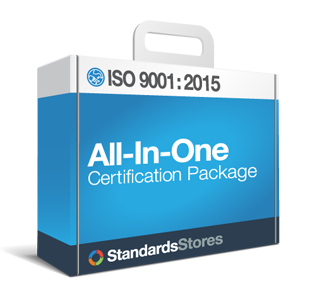ISO 9001 Quality Management System
WHAT IS A QMS?
A quality management system (QMS) is a set of policies, processes and procedures required for planning and execution (production/development/service) in the core business area of an organization (i.e., areas that can impact the organization’s ability to meet customer requirements). ISO 9001 is an example of a Quality Management System.
A few details about Quality Management Systems:
Some people generically refer to the group of documents as a QMS, but specifically, it refers to the entire system – the documents just describe it.
A QMS integrates the various internal processes within the organization and intends to provide a process approach for project execution. A process based QMS enables the organizations to identify, measure, control and improve the various core business processes that will ultimately lead to improved business performance.
A complete ISO 9001 Quality Management System must address all the requirements of ISO 9001, including the ISO 9001 documentation requirements.
A great way to understand how ISO 9001 works is to apply it to an example. Here is an easy example of ISO 9001 applied to making cookies.
The Concept of Quality Management
A Quality Management System in its basic concept is quite simple. It seeks to:
- Recognize interested party requirements including Licenses to Trade, guidelines, customer requirements, and the chosen management system standard(s).
- Ensure that all requirements have been met.
- Confirm that employees receive applicable training in the quality system requirements.
- Determine processes, their interaction, inputs and outputs.
- Produce records or evidence that system requirements have been met.
- Measure, monitor and report the performance of the QMS.
- Plan changes to the QMS and take actions to address risks and opportunities as a result of changes.
- Perform internal audit to analyze the QMS and correct nonconformities.
- Continually improve the QMS.
Products to help you create a Quality Management System
- Our Complete ISO 9001 QMS includes the ISO 9001 Quality Manual, Procedures & Forms
- Our step-by-step guide explains how to implement a QMS
- ISO 9001 Requirements Training helps you to understand the ISO 9001 requirements
What A Quality Management System Is Not
There are many definitions for general quality management systems. Most of them emphasize the use of some type of system that is repeatable, measurable and constantly improving. In an ISO 9001 (or other ISO standards) quality system, this structured way of delivering a better service or product is supported by documented information such as procedures, work instructions, policies and forms. The key is to provide all those who must execute the quality system with documented, understandable and workable instructions which define both expectations, responsibilities and actions to achieve the stated quality goals. Most of the systems include some type of external and internal auditing process which ensures that the system is in compliance with requirements.
At its core, a quality management system is an integrative element, uniting diverse aspects of a company into a unified purpose of delivering products/services in their best form. Rather than be seen as a cost burden, an effective quality management system is viewed as a key component of success. Quality management systems focus on:
- Being centered on the customer or consumer of the good or service, actively providing that customer with the best value possible.
- Some type of continuous improvement program, which implies that there is not a “perfect” state, all processes can be continually improved upon.
- An efficiency imperative that says waste must be reduced and all resources maximized.
- Top management is to support and provide adequate resources to achieve goals.
- It aids or facilitates a clear understanding of expectations between all participants.
- Measurement and accurate data collection are incorporated to support data-driven decision making.
- Documentation of QMS processes is maintained and controlled.


